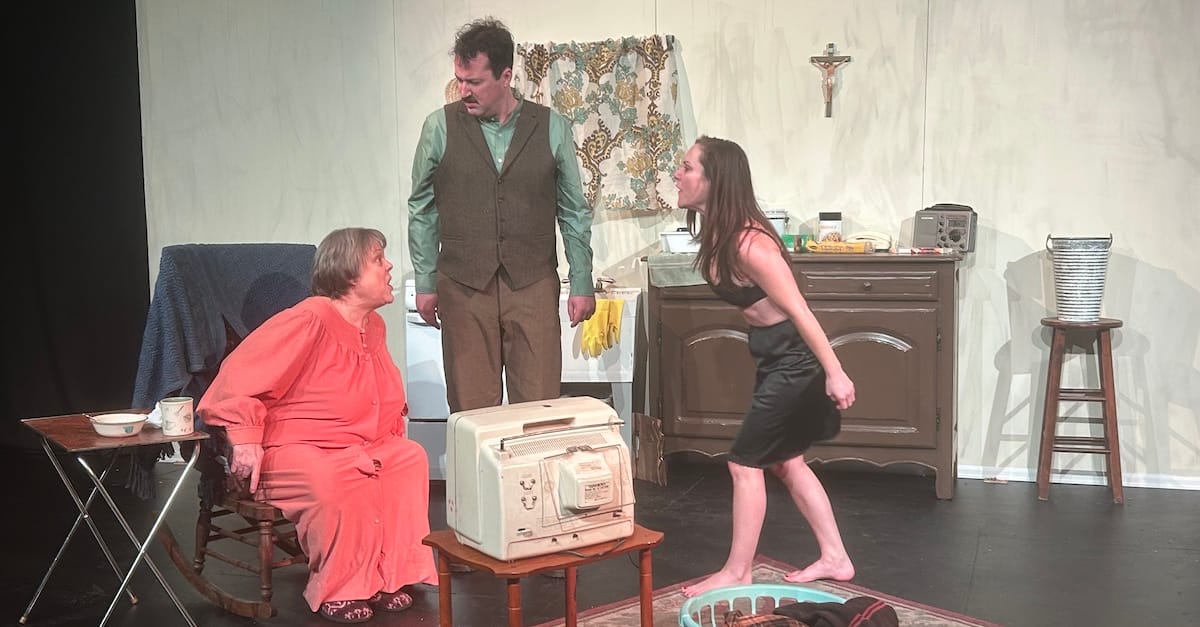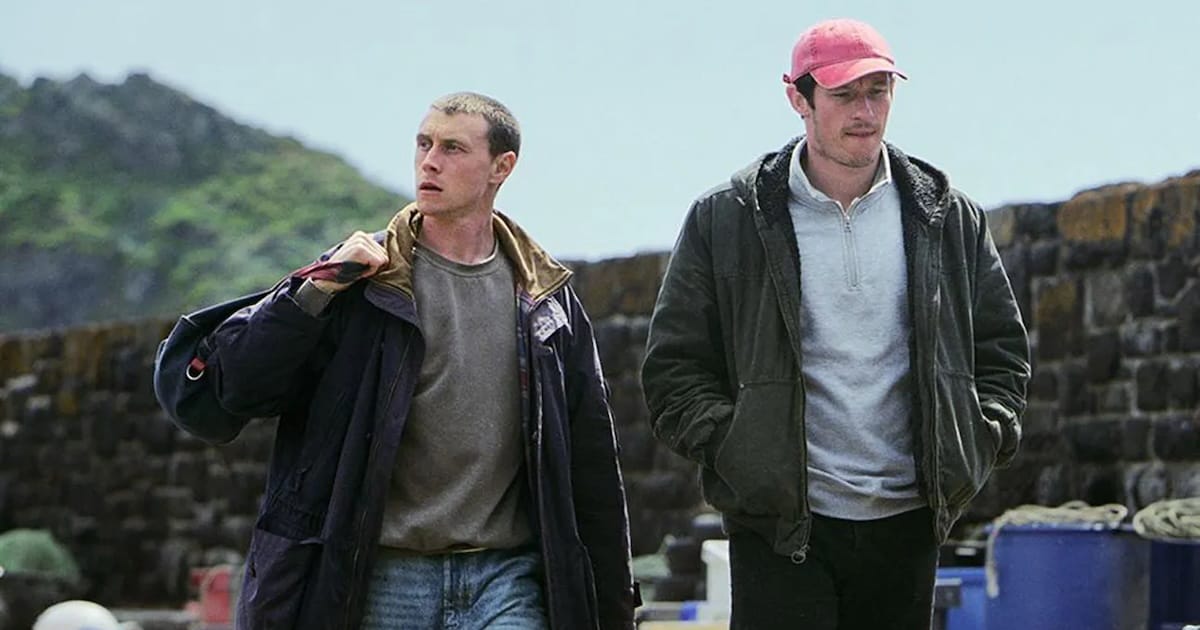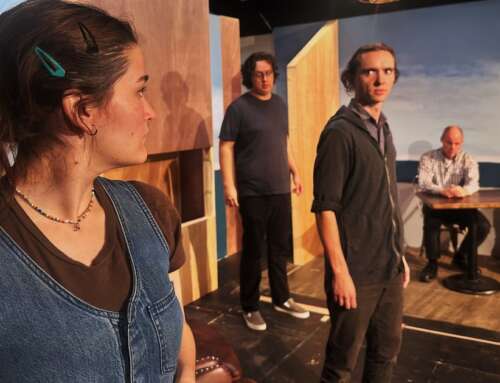Martin McDonagh’s grim play comes to life in a solid production at The People’s Building
The Beauty Queen of Leenane, a play by Oscar- and Olivier-winning playwright, screenwriter and director Martin McDonagh, is a heartbreaking, savagely funny story. In the first production of the play in Denver in several years, Invictus Theatre Company serves up a passionate production of the play at the People’s Building in Aurora.
Beauty Queen is the first of McDonagh’s Leenane Trilogy, plays set in County Galway, Ireland. This one tells the story of Maggie and Maureen Falon, an aging mother and her middle-aged, spinster daughter, living circumscribed lives in the remote village of Leenane. The relationship between these two women is a suffocating story of co-dependency write large. Their interactions are one long chain of insults and petty and not-so-petty malice.
When a former high school boyfriend, Pato Dooley, returns for a brief visit, Maureen gets a chance for love and escape from her mother’s domineering ways. But Maggie’s sabotage via a surly neighbor, Ray Dooley, derails Maureen and Pato’s reunion. In a grisly climax, Maureen visits vengeance on her mother.
Dark, but funny
Grim as this sounds (and it is grim), the play also finds dark humor and the veteran Invictus cast skillfully created a tragi-comic atmosphere. As Pato, Andrew Catterall opens the second act with a monologue – a letter to Maureen detailing his admiration of her and his hopes for their future. Catterall exuberantly covered the speech’s terrain from slightly racy humor to poignant longing. The brief moments were a high point of the show.
As Maureen, the eponymous beauty queen, Miranda Byers delivers a memorable portrait of someone who’s long since reduced her expectations of life to a daily grind of misery but is suddenly reminded that happiness could be possible. Byers embodies a wide emotional range, veering believably between cranky hostility and wistful longing. Unfortunately, in her softer tones, Byers was sometimes hard to hear in the high-ceilinged space of the People’s Building.
Director Christin Martin paces the show well, and Suttle and Byers are both strong in the roles. When Maureen exacts her physical revenge on Maggie in the climax, Suttle powerfully captures the older woman’s agony.
Even so, the undercurrent of malice between the two in the early scenes doesn’t feel as strong as we know it must be, based on the women’s history and their ultimate conflict. Maggie’s first overt sabotage of Maureen, destroying a written invitation Ray has snappishly delivered, comes off more as mischief than the spiteful sabotage we know it to be.
Fabian Vazquez was a lively presence as Ray, the reluctant message-deliverer, fed up first with Maggie and then Maureen. Vazquez took full advantage of a final scene when Ray justifies longstanding resentments, an attitude displayed by all the characters except Pato.
The roomy space in the People’s Building allowed the action to range freely. The spare set design by Jeffrey Martin mixed kitsch décor — like a hand towel imprinted with a famous Irish proverb — with solemn religious emblems such as a prominently displayed crucifix. All of it captures how hand-me-down cultural glory has faded into the drab reality of Maggie and Maureen’s lives.
Lighting design by Selena Naumoff, who also serves as stage manager, effectively spotlit Pato’s monologue from London, the only scene not set in the Falon women’s home.
Jeffrey Parker served as dialogue consultant, helping the cast deliver authentic Irish brogues. Byers also employed a lilt in her line delivery that conveyed some latent hopefulness in Maureen. The program also included a helpful glossary of a few recurring Irish terms and pronunciations.
Beauty Queen is a haunting story that explores the pathos of unrealized lives. It’s dark, challenging material, and Invictus pulled it off well.
Judith Sears has had a 25-year career in marketing and corporate communications. Over the last several years, she has pursued playwriting, and several of her short plays have received staged readings at Colorado theatres.










Leave A Comment